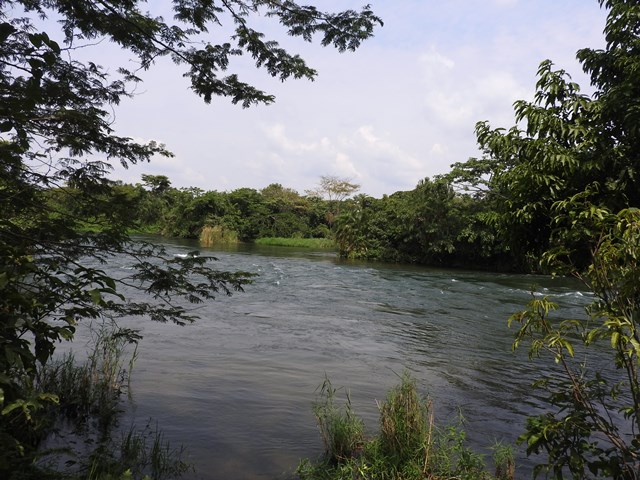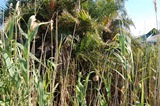Hairy Lemon Island, Nile River, Uganda, 13 July 2017
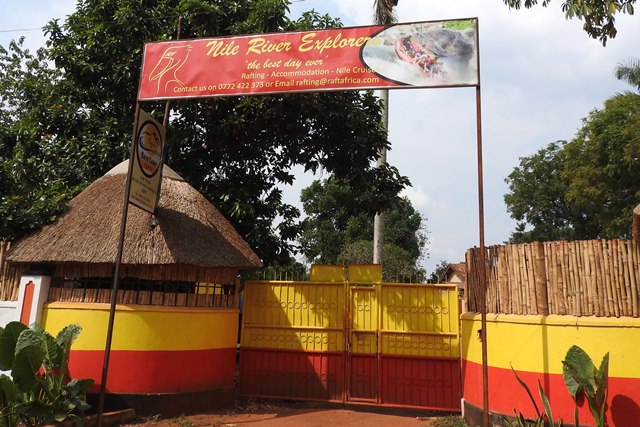
As part of a research visit to Uganda, Dayo Osinubi and I visited Jinja at the source of the Nile, to scope the area for bird ringing opportunities. Patrick Rollinson joined us. We arrived late Thursday afternoon and found accommodation at the Jinja BaseCamp (which also hosts the rafters Nile River Explorers). The owners of the basecamp backpacker accommodation, Nicci Martin (and Paul Ferguson), told us about their island, the Hairy Lemon, about 45kms north of Jinja.
Nicci kindly provided us with a very early breakfast so that we could spend the morning on the island. After the drive north, a canoe took us across to the secluded island in a few minutes.
Hairy Lemon Camp
Hairy Lemon Island is named after an Irish pub, where the owners of the island met. There are 3 islands linked by two bridges, the first island being linked to a second by a fixed bridge, and that to a third island by a sway bridge. There is a variety of accommodation options, with meals included. There are possibilities for various river adventures, birding, or having an amazing relaxing experience. The facilities on the island are natural, e.g. using solar power and a biogas facility.Sam Holland, manager of the island, happily let us put up a few mist nets to try and catch birds for the morning on this beautiful paradise island.
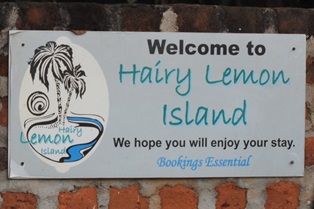 Hairy Lemon |
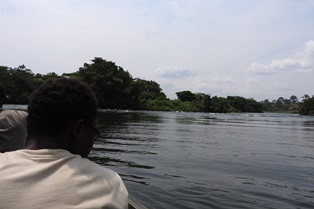 Canoe transfer to island |
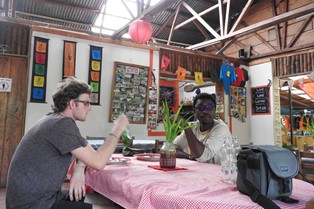 Patrick and Dayo in the island pub |
 Lagoon with water volleyball net |
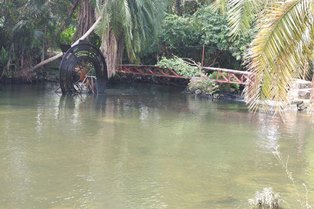 Bridge 1 |
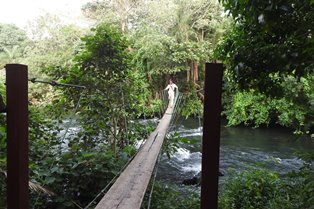 Bridge 2 |
Biodiversity photos
There is an amazing diversity of life on the islands with many colourful and interesting birds, butterflies, dragonflies and other creatures. Those that I managed to photograph (in between studying the weavers) are shown below. These photos are all in the Animal Demography Unit Virtual Museum (VM). Click on a photo to see the VM record - sometimes more photos are shown for a record, the photos may be viewed at higher resolution there, and once the species has been identified, the VM record will show the species name (these names will occasionally be updated on this site).Birds
We caught and ringed a Village Weaver and more excitingly, a Shikra (Little Banded Goshawk). With more time and planning, more birds could be caught.
 Reed Cormorant |
 White-breasted Cormorants breeding |
 Giant Kingfisher female |
 Shikra (photo by Dayo Osinubi) |
 Black-and-white Flycatcher male |
 Village Weaver |
Village Weaver colony
There was a Village Weaver colony in a tree growing on a rocky outcrop in the midst of some pounding rapids. The siting provides great protection from ground predators. The colony of 43 nests was active, with at least 6 males, and several females feeding chicks or incubating.
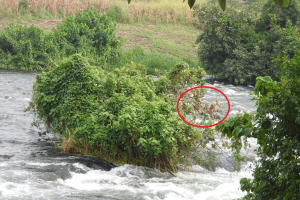 Village Weaver colony |
 Village Weaver colony |
Butterflies
 Cambridge vagrant Nepheronia thalassina sinalata |
 |
 |
 Junonia terea tereoides |
 |
 |
 Spotted sailer Neptis saclava marpessa |
 Butterfly caterpillar |
Dragonflies and damselflies
 dragonfly |
 dragonfly (iridescent upper wings in flight) |
 dragonfly |
 dragonfly |
 damselfly |
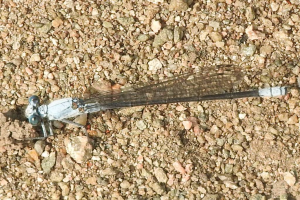 damselfly |
Other fauna and flora
 Red-tailed Monkey Cercopithecus ascanius |
 Red-tailed Monkey - agile jumpers! |
 orb-web spider |
 Nile Monitor Varanus niloticus |
 fungi on bridge 1 |
 fungi on bridge 1 |
Last chance to see
This idyllic paradise will unfortunately not last. A dam is being built 10km downstream from Hairy Lemon, and when completed, the Nile will completely submerge Hairy Lemon and other islands and everything on these islands.The affected stretch of river is becoming one of the most popular river adventure areas in the world, so the dam will significantly impact tourism on the White Nile - read more in the online Daily Monitor.
Currently, the dam is expected to be completed in May 2018 - see Kayak the Nile for updates.
| Contact Jinja BaseCamp and Hairy Lemon to visit. |
Acknowledgements
Thanks to Nicci Martin and Sam Holland for such a great opportunity to visit their islands!